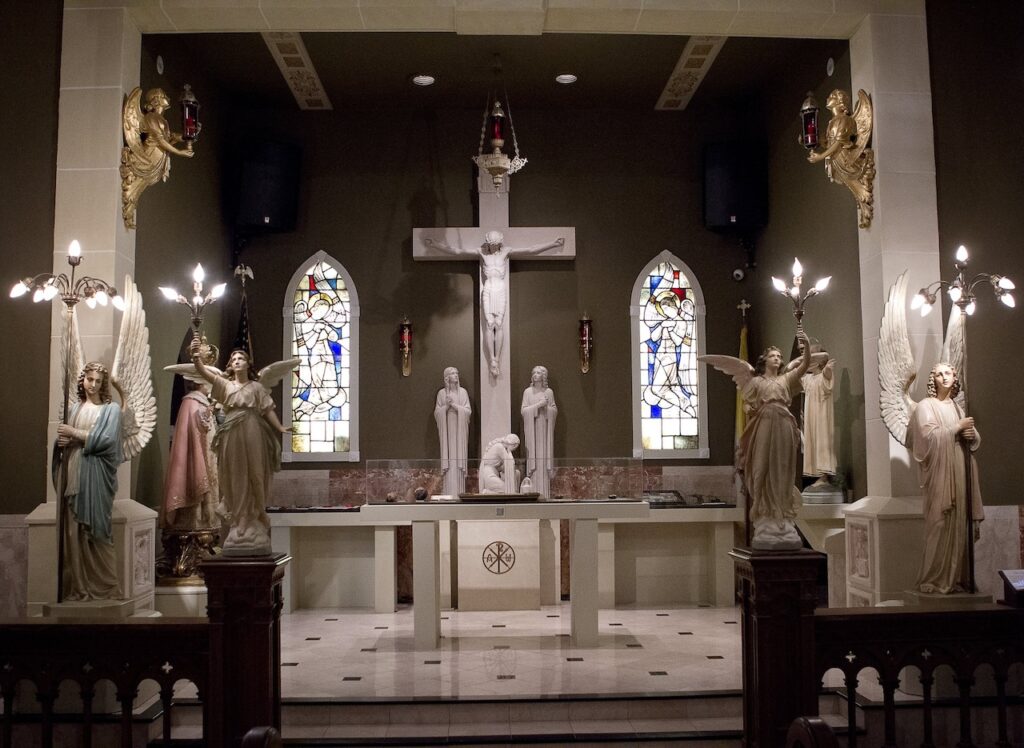(OSV News) — A new report shows the overall number of parishes in several U.S. dioceses has declined during the past 50 years, even as both the general population and the total Catholic population have grown — and the data points to shifts in where U.S. Catholics are now living.
“Parish, Ecclesial and Socioeconomic Statistics for Eleven Dioceses between 1970 and 2020” was released April 4 by the Center for Applied Research in the Apostolate at Georgetown University in Washington.
The 775-page report from CARA had been commissioned by the Cleveland-based nonprofit FutureChurch, which had requested insights on trends within 11 largely urban Roman Catholic dioceses and archdioceses in the nation’s Northeast and Midwestern regions: the archdioceses of Baltimore, Chicago, Detroit, Miami, New Orleans, New York, Philadelphia and St. Louis, and the dioceses of Bridgeport, Connecticut, Cleveland and Memphis, Tennessee.
The study, prepared in the fall of 2022 and the spring of 2023, drew on data from the Official Catholic Directory, the U.S. Decennial Religious Census (published by the Association of Statisticians for American Religious Bodies) and various compilations of U.S. Census Bureau data, such as the Neighborhood Change Database and the American Community Survey, as well as the Census Bureau’s GeoCoder database, MassTimes.org and diocesan data.
For the 11 dioceses and archdioceses, FutureChurch asked CARA to investigate three lines of inquiry:
- How parish counts had evolved, given the shifts in Catholic population, sacrament reception and the number of priests
- The number of parish closures, continuations, mergers and expansions in each diocese or archdiocese
- The socioeconomic variables that may impact parish openings, expansions, closures and mergers
CARA stressed that the report’s dioceses and archdioceses were “not meant to constitute a nationally representative sample,” as they had been “selected to fit the specific needs” of FutureChurch.
Among those dioceses and archdioceses, CARA found a 9% decrease in parishes between 1970-2020, noting that “the average number of parishes per diocese decreased faster (by 27%) because new dioceses were created in this period.”
At the same time, the general population of all dioceses in the U.S. grew by 65% from 1970-2020, with the total Catholic population rising by 46%, said the report.
In addition, the overall size of U.S. Catholic parishes grew by a total of 60%.
Among the study group:
- The Archdiocese of Miami experienced the smallest downturn in parishes (2%), while the Archdiocese of Detroit saw the largest at 28%.
- The Archdiocese of New York experienced the most substantial increase (118%), with the Archdiocese of Miami’s overall parish sizes contracting by 13%.
- The Archdioceses of Chicago (187), Detroit (146) New York (111) and Philadelphia (104) closed the greatest number of parishes between the 1970s and the decade of the 2010s. New York simultaneously kept the highest number open at 276. The Diocese of Memphis closed just two parishes, while Baltimore, Bridgeport and Miami closed 23, 20 and 17 respectively.
- All of the 11 dioceses reopened or expanded parishes, with Detroit leading the group at 57 and Bridgeport at the low end with eight, followed by Memphis and New York with both at nine.
CARA explored the relationship between parish status and socioeconomic variables — such as household income, ethnicity and employment status — in two ways, looking first at the diocesan level and then at the neighborhood level.
The report found that in 9 out of 11 of the dioceses, “the number of parishes was positively correlated with Catholic population size and the White/Anglo/Caucasian population.”
However, the number of parishes was “negatively correlated” with the Hispanic/Latino population in nine dioceses, and with the population living below the poverty line in some seven to eight dioceses.
The report cautioned that “some but not all of those correlations are strong” or “statistically significant” and stressed that “correlation does not imply causation.”
Jesuit Father Thomas P. Gaunt, CARA’s executive director, told OSV News April 5 that his research shows “the number one factor” among the trends described in this report is “the movement of Catholic population” from “more urban areas to more suburban areas,” and “from the Northeast and Midwest to the South and West” in the U.S.
Father Gaunt also said it is key to “recognize that Catholic parishes have a given territory.”
Canon law states that “as a general rule a parish is to be territorial,” although personal parishes may be established according to the rite, language or nationality of faithful “when it is expedient.”
At the same time, “fully 30% to 40% of Catholics ignore their parish boundaries and go to the parish that they’re more comfortable with, and that’s been true for decades,” said Father Gaunt. “People move, buildings don’t. So the territory of the parish goes from 3,000 to 300. But the building, the facilities — all of that stays put.”
In some large urban dioceses, a “little by little” long-term decline in families leads to “programs of subsidizing and providing (for) the parishes with a diminishing population,” he said.
But in the absence of a “turnaround,” said Father Gaunt, “after a while, the diocese says, ‘We can’t pay all the utility bills, the insurance bills, the maintenance bills for all these buildings that are only partially utilized. We’re putting money into maintenance and insurance as opposed to services and evangelization.'”
In a 2021 paper, Father Gaunt and two fellow researchers noted that “the official, parish-identified, Catholic population in the U.S.” had grown 40% from 1980 to 2019, from some 48 million to more than 67 million.
However, such growth has been “anything but uniform,” Father Gaunt and his co-authors wrote.
The nation’s South and West have experienced “a boom” in the number of Catholics, while the Northeast and Midwest have had “a bust,” they said.
Given the many factors affecting U.S. Catholic parish size, Father Gaunt told OSV News, in some places one bishop may be “building churches,” while another is “looking at empty pews.”

